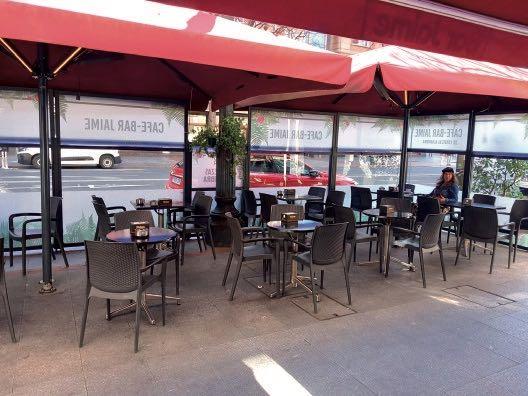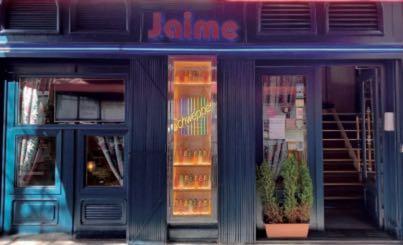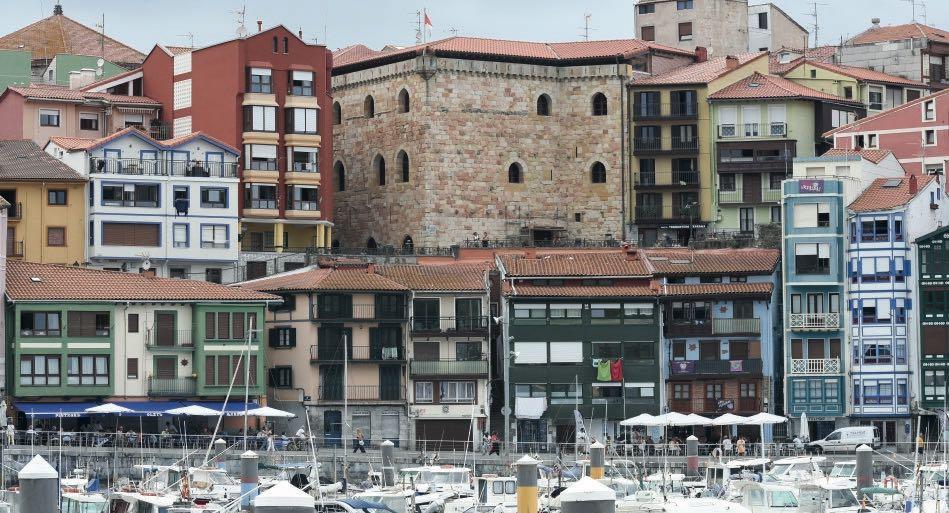
6 minute read
the legacy of the towers that built bizkaia
When visiting Biscay, you may miss the great crenellated fortresses that dominate the landscapes of old Europe. From Scotland to Sicily, from Gibraltar to the Urals, medieval castles have been preserved and are now genuine attractions. The impressive castle of Olite in Navarre or the more modest Sajazarra in La Rioja are nearby examples. In Bizkaia, towers have taken their place.
The absence of a border with Al Andalus and the remoteness of the marks of the Frankish kingdoms prevented the concentration of Biscay’s mediaeval assets on the construction of large castles to protect the territory. The disputes between the kingdoms of Asturias first, then León and later Castile with those of Navarre and Aragon were always settled in other lands and did not require huge fortresses either.
Advertisement
Comida tradicional vasca
Especialidad en pescados y carnes
Producto local de temporada
Throughout the Middle Ages, villages were founded and walled and, above all, towers were erected. Many of these towers were built inside the towns themselves. Most of them outside them, in what was called “Tierra Llana” (Flat Land). They were always related to water mills, ironworks, bridges, fords and patron saint churches. In the town of Bermeo alone, there were 30, and the one of Ercilla is still preserved. Bilbao boasted a good handful of them, of which
Traditional Basque food
Specialising in sh and meat
Seasonal local produce salas de exposiciones y similares. Son visitables. Y merecen la pena. Veamos algunas.
Torre De Ercilla En Bermeo
Vigila el puerto viejo de Bermeo desde finales del siglo XV. Fue casa solar de la familia Ercilla, de donde procedía el militar y escritor renacentista Alonso de Ercilla. Presenta una planta hexagonal con obra de sillería y mampostería. Declarada monumento a mediados del siglo XX y adquirida por la Diputación Foral, alberga un interesante Museo del Pescador.
Torrebillela En Mungia Y Malpica En Zamudio
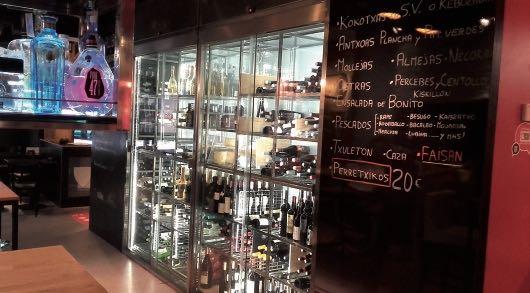
Su origen se remonta a la edad media, con más que probable relación con el río Butrón. Fue remodelada por primera vez durante el Renacimiento y, posteriormente, en 1852. Actualmente, un palacio que envuelve tres de las caras de la torre, que cuenta con numerosos elementos neogóticos. Hoy alberga una sala de exposiciones municipal, sala de conferencias y equipamientos culturales. Al mismo uso destina Zamudio su Torre de Malpica, muy próxima a la iglesia de San Martín y visible desde la carretera.
TORRE DE OXIRANDO, EN GORDEXOLA
Fue levantada a principios del siglo XVI para controlar la calzada que conectaba la meseta con el interior de Bizkaia en la margen derecha del río Herrerías. Se trata de un edificio único en su tipología y está considerada como una de las más bellas obras de la arquitectura civil de la zona en el que se aprecian elementos tardogóticos y renacentistas.
En El Duranguesado
En esta comarca se ubican la Torre de Etxaburu en Mañaria, ambas situadas en enclaves paisajísticos excepcionales. No se queda atrás la Torre de Izurtza, cerca de Durango, un magnífico edificio del siglo XV. En la misma
Butrón
Cuenta Bizkaia con dos espectaculares castillos, en sus cimientos medievales, pero cuya imagen actual es resultado de la arquitectura neogótica del siglo XIX. Se trata de Butrón y Arteaga.
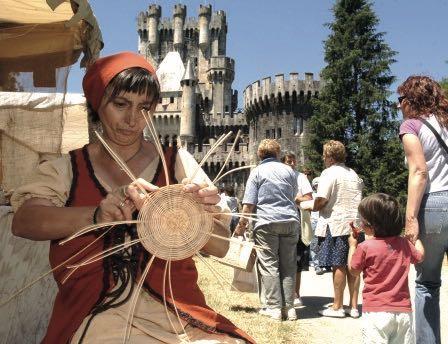
El de Butrón, en Gatika, entre Mungia y Plentzia, fue escenario de batallas durante la Edad Media y el Renacimiento. En 1878, el arquitecto Francisco de Cubas lo reconstruye totalmente inspirándose en los castillos bávaros y el Alcázar de Segovia. El resultado es impactante.
El de Arteaga se encuentra en el municipio del mismo nombre, en plena reserva de la biosfera de Urdaibai. Nada queda de la humilde torre defensiva original. En su lugar el Duque de Alba mandó construir un castillo de inspiración francesa, en el siglo XIX, para homenajear a su cuñada, Eugenia de Montijo, esposa de Napoleón III.
only vestiges remain. Portugalete still boasts that of the Salazar family.
Originally, they were used to defend the rights of the great families of the territory in internal disputes or as a reflection of dynastic conflicts in Bizkaia. After the Middle Ages, these towers, which were generally cubic, crenellated, with a high access and a small outer wall in the case of those built outside the villages, came to have a palatial and representative function. Many were transformed into large farmhouses. And others are no longer standing.
A large part of them, in varying degrees of transformation, are now used for public functions, such as museums, exhibition halls and suchlike. They are open to visitors. And they are well worth a visit. Let’s take a look at some of them.
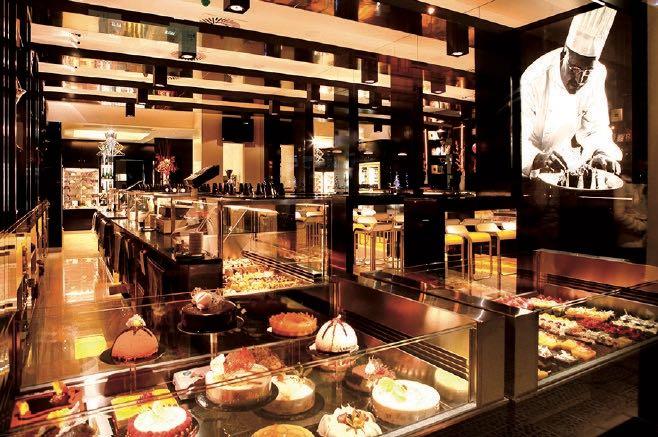
Ercilla Tower In Bermeo
It has watched over the old port of Bermeo since the end of the 15th century. It was the family seat of the Ercilla family, the origin of the military man and renaissance writer Alonso de Ercilla. It has a hexagonal floor structure with ashlar and masonry work. Classified as a monument in the mid-20th century and acquired by the Provincial Council (“Diputación Foral”), it houses an interesting Fisherman’s Museum.
Torrebillela In Mungia And Malpica In Zamudio

Its origins date back to the Middle Ages, more than likely linked to the Butrón river. It was first remodelled during the Renaissance and then in 1852. Today, it is a palace that encloses three of the sides of the tower, which has numerous neo-Gothic elements, and now houses a municipal exhibition hall, conference room and cultural facilities. Zamudio uses its Malpica Tower for the same purpose, which is very close to the church of San Martín and visible from the road.
OXIRANDO TOWER, IN GORDEXOLA
It was built at the beginning of the 16th century as a road control point connecting the plateau with the interior of Bizkaia on the right bank of the river Herrerías. It is a unique building of its kind and is considered to be one of the most beautiful works of civil architecture in the area, with late Gothic and Renaissance elements.
In The Duranguesado Area
The Etxaburu Tower in Mañaria is located in this area, both in exceptional scenic settings. Not far behind is the Izurtza Tower, near Durango, a magnificent 15th century
UN LUGAR PARA EL CAPRICHO zona, pero en Abadiño, la Casa Torre de Muntsaraz, hoy destinada a sede de un organismo público, hunde sus raíces en un edificio defensivo que se remonta al siglo IX.
FEEL LIKE A SWEET TREAT?
Degustación de chocolate a la taza, batidos, café, infusiones y refrescos que acompañados de un dulce hacen realidad los sueños de los más golosos.



Come and try our selection of hot chocolate, milkshakes, coffee, teas, infusions and soft drinks. If you try some cake or dessert too, your sweetest dreams will come true.

Otras Torres
Entre otras torres de interés se cuentan la de Aranguren en Orozko; la de Madariaga en Busturia, sede del Centro de la Biodiversidad de Euskadi; la de Avellaneda, sede de la building. In the same area, but in Abadiño, the Casa Torre de Muntsaraz, now the headquarters of a public body, has its roots in a defensive building dating back to the 9th century.
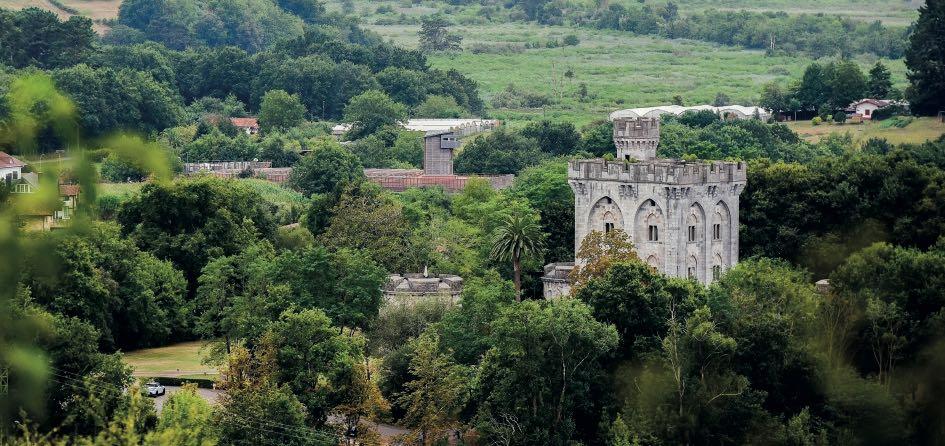
Casa de Juntas de Enkarterri; o la Torre de Muñatones, en Muskiz, que se remonta al siglo IX, conserva su muralla íntegra, es escenario de recreaciones históricas y dispone de visitas guiadas.
Sitúe en un mapa las torres que más hayan llamado su atención, trace una ruta y visítelas. Encontrará buenos restaurantes y tabernas, además de gentes acogedoras, junto a ellas.
Biscay is home to two spectacular castles, whose foundations date back to the Middle Ages, but whose current look is the result of 19th-century neo-Gothic architecture. We are talking about Butrón and Arteaga.
Butrón, in Gatika, between Mungia and Plentzia, was the battlefield for mediaeval and Renaissance battles. In 1878, the architect Francisco de Cubas rebuilt it completely, inspired by Bavarian castles and the Alcázar of Segovia. The outcome is stunning.
Arteaga Castle is in the town of the same name, in the heart of the Urdaibai biosphere reserve There is nothing left of the modest original defensive tower. In its place, the Duke of Alba had a French-inspired castle built in the 19th century to pay honour to his sister-in-law, Eugenia de Montijo, wife of Napoleon III.
Other Towers
Among other interesting towers are the Aranguren Tower in Orozko; the Madariaga Tower in Busturia, headquarters of the Basque Biodiversity Centre; the Avellaneda
Tower, headquarters of the Enkarterri Assembly House; or the Muñatones Tower in Muskiz, which dates back to the 9th century, still has its walls completely intact, is the setting for historical recreations and offers guided tours.
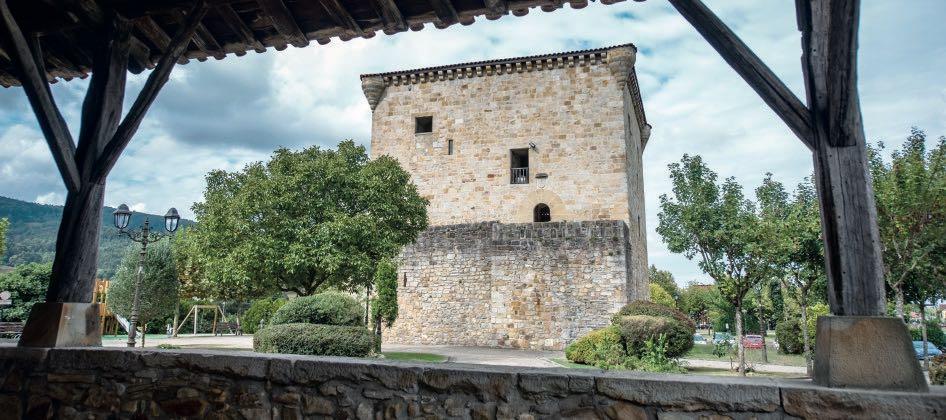
Place the towers that have most caught your attention on a map, trace a route and visit them. You’ll find good restaurants and taverns, as well as welcoming people, next to them.
